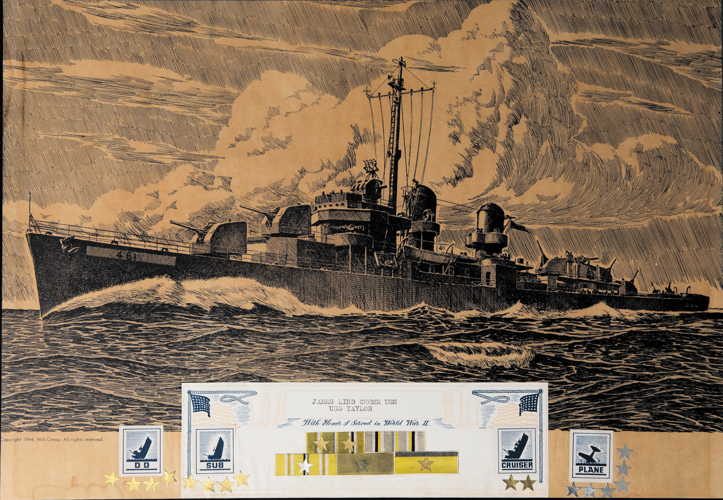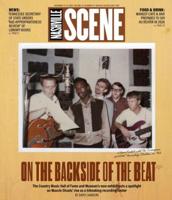
J.R. Lind in 2002
“Thank you for your service.”
As a veteran, I hear this a lot, particularly at this time of year. It’s usually preceded by “You were in the military?”
The response to that question is easy enough to formulate. While dorky, muss-haired alt-weekly reporters aren’t exactly the image most people conjure when they think of veterans, I did indeed serve in the United States Navy between 2002 and 2006, doing stints in San Diego and Norfolk and Dam Neck, Va., and St. Mawgan, Cornwall, U.K. — plus an 86-day taxpayer-funded cruise through the North Atlantic and Arctic Ocean.
But how to respond to the thank-you? Lots of vets I know struggle with their response. “You’re welcome” doesn’t feel quite right. I’ve grown out of the sheepish nod and half-smile that was my go-to in the first few years after I was discharged.
Now I say: “It was an honor. I’m proud of my service.”
It was, and I am. My military experience wasn’t universal — every service member serves differently and takes different things away from it. It wasn’t traumatic. The closest I got to combat was sharing a nod with a Russian Tu-95 pilot as he flew low around my ship one morning during my post-watch smoke break, snooping into the snooping we were doing. The greatest danger I was ever in came when the good ship Loyal took the rough waves of the Arctic broad on her starboard bow — the waves tossed the 235-foot twin-hulled ship like a rubber duck in an ice bath during an earthquake.
As Sturgill Simpson, another former Navy man who did a stint in Dam Neck, sings, “I’ve got sea stories, they’re all true.”
When I raised my hand and swore my oath in the winter of 2002, I didn’t know what I was getting into. I certainly didn’t expect I’d spend most of my time fighting the Cold War a decade after it ended. I grew into it — or was forced to grow into it, if you prefer — and did the best I could, even as I struggled with what often seemed a fairly inconsequential mission while thousands of other people were fighting and dying in Afghanistan and Iraq.
I met some of them when I was in Cornwall. Seabees — members of the Navy’s construction battalions, essentially construction workers whose job it is to lay infrastructure after the SEALs and the Marines make landfall — often rotated to St. Mawgan to do routine maintenance after enduring tours at the tip of the proverbial spear. These were men who had seen combat, whose ears rang with the noise of whirring shells, who rode on Jeeps down roads where an innocuous-looking package on the shoulder might not be innocuous after all.
Most of the time, they were a jolly bunch of work-hard-play-hard sailors, but sometimes ... usually at night, often after a few too many of Cornwall’s (in)famous ciders, sometimes their eyes would turn distant and empty, and they’d be somewhere else. A guy who’d slapped your back and handed you a pint with a hale and hearty “Here ya go, shipmate” five minutes earlier would become violent or angry or inconsolably sad, or just go elsewhere in his mind. A desert or a beachhead 3,000 miles away.

The ship J.R. Lind’s grandfather, James Lind served on in WWII
These were the first real casualties of the war I’d encounter, and those of us who hadn’t seen what they’d seen learned to watch for the signs, learned what to do when they went to that place. We knew it wasn’t them threatening to take a swing at us or sobbing in the corner of a noisy dance club. It was that damn war, hiding away somewhere in their brain and bursting out to drag them back to hell.
When my stint was up and I went back home, I thought about those guys a lot. It took a long time for me to get back to normal, whatever that meant. It was hard at times for me to connect with my old friends and my family. And by comparison to those Seabees, my enlistment was mundane, almost comically easy. But if I had a hard time, how hard was it for them? And for the thousands of Soldiers, Sailors, Marines and Airmen who spent their time under nearly constant threat instead of under 47 feet of concrete in a forgotten corner of Britain?
Those men and women are all around us, every day. I’d wager that many people have certain go-to images of vets: older men — granddads or fathers — marching in parades or, unfortunately, homeless people holding signs.
Of course, that’s just a small percentage (an ever-smaller percentage, unfortunately in the first instance and thankfully in the second), because vets are growing your food or sitting on the bench or teaching your kids or singing your favorite song or writing for your local alt-weekly and doing the hundreds of thousands of other things that make society go. Sometimes what they do is an extension of their military service (I’ve always seen both journalism and my naval service as ways to serve my country, for example), and sometimes it’s a reaction to what they experienced, a way to cope, a way to heal.
As we all learned in U.S. History, the First World War — the one that was supposed to end them all — concluded in the 11th hour of the 11th day of the 11th month of 1918. Last year marked the centenary of the Armistice. That makes this year the 100th anniversary of the first celebrations of Armistice Day. After it became clear the Great War didn’t fulfill its promise to stop war completely, Armistice Day, at least in the U.S., became Veterans Day to commemorate those who served whenever and wherever.
In this issue of the Scene, we take a look at the veteran experience: how one vet became a farmer, how the city is trying to help the most vulnerable vets, how the veterans organizations who’ve long been the voice of the vets community are trying to stay vital as they face older members passing away, with younger vets reluctant to join their ranks.
It was an honor to put this issue together, and I’m proud we did it.






